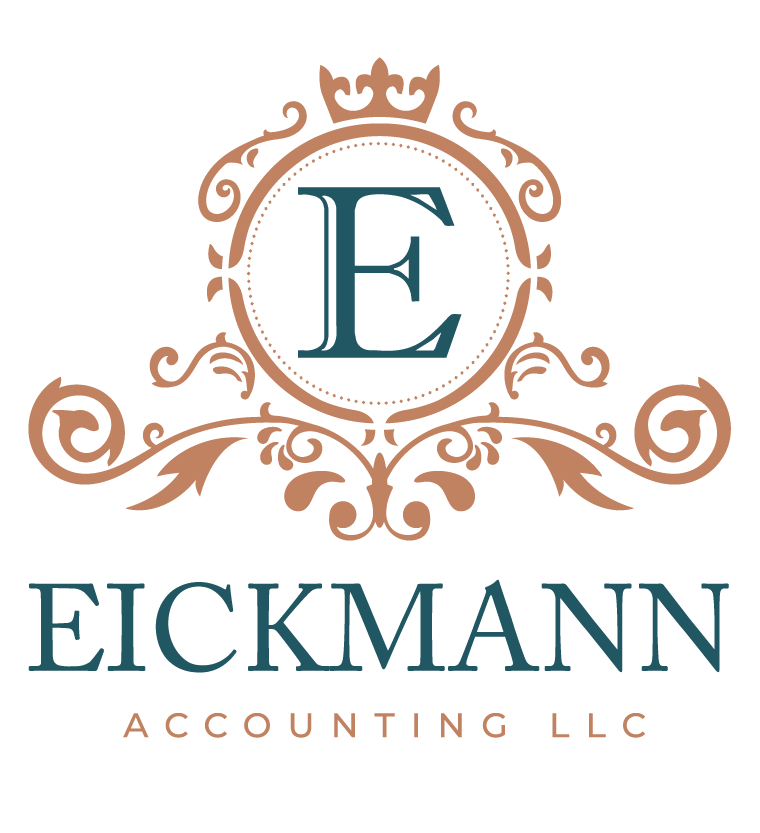Demystifying Estimated Taxes: What Every Freelancer & Small Business Needs to Know
You’ve finally landed that big freelance gig, your side hustle is taking off, or your new small business is gaining traction. Congratulations! But amidst the excitement, many self-employed individuals and small business owners overlook a crucial financial responsibility: estimated taxes. The surprise of a hefty tax bill (and potential penalties) at year-end can quickly dampen success.
At Eickmann Accounting, we believe financial clarity is empowerment. Let’s demystify estimated taxes, explaining what they are, who needs to pay them, how to calculate them, and the all-important quarterly deadlines.
What Are Estimated Taxes and Who Pays Them?
Unlike traditional employees whose taxes are withheld from every paycheck, if you’re self-employed, an independent contractor, or run a business (like a sole proprietorship, partnership, or S-corporation), the IRS requires you to pay your income tax and self-employment tax throughout the year as you earn income. This “pay-as-you-go” system is what we call estimated taxes.
Who Needs to Pay? Generally, you’ll need to pay estimated taxes if you expect to owe at least $1,000 in tax for the year. This applies to most:
Freelancers and independent contractors
Small business owners (sole proprietors, partners, LLC members)
Individuals with significant income from investments, dividends, rent, or alimony.
If you don’t pay enough tax throughout the year through withholding or estimated payments, you could face an underpayment penalty.
What Do Estimated Taxes Cover?
Your estimated tax payments aren’t just for federal income tax. They also cover:
Federal Income Tax: Your share of income tax based on your estimated annual earnings.
Self-Employment Tax: This is your contribution to Social Security and Medicare taxes. Since you don’t have an employer withholding these for you, you’re responsible for both the employer and employee portions. Currently, this is 15.3% on your net earnings from self-employment (12.4% for Social Security up to the annual limit, and 2.9% for Medicare with no earnings limit).
How Do You Calculate Estimated Taxes?
Calculating your estimated taxes involves projecting your gross income for the year, subtracting any anticipated deductions, and then calculating both your self-employment tax and your federal income tax.
The general rule is to pay at least 90% of your current year’s tax liability or 100% (or 110% for higher income earners) of your prior year’s tax liability, whichever is smaller, to avoid penalties.
The Challenge: Estimating your income can be tricky, especially if you’re a new business or freelancer with fluctuating earnings.
Actionable Tip: The IRS provides Form 1040-ES, Estimated Tax for Individuals, which includes a worksheet to help you figure your estimated tax. If your income significantly changes during the year, recalculate and adjust your payments accordingly. It’s better to overpay slightly and get a refund than to underpay and face penalties.
When Are Estimated Taxes Due? (The Quarterly Breakdown)
This is where many people get confused! “Quarterly” doesn’t necessarily mean every three months from January 1st. The IRS sets specific payment periods:
Payment Period 1 (January 1 to March 31): Due April 15
Payment Period 2 (April 1 to May 31): Due June 15
Payment Period 3 (June 1 to August 31): Due September 15
Payment Period 4 (September 1 to December 31): Due January 15 of the following year
Important Note: If any of these due dates fall on a weekend or holiday, the deadline shifts to the next business day.
How to Pay Estimated Taxes
The IRS offers several convenient ways to make your estimated tax payments:
IRS Direct Pay: Make payments directly from your checking or savings account online.
EFTPS (Electronic Federal Tax Payment System): A free service from the Treasury Department.
Debit/Credit Card: Through an authorized payment processor (fees apply).
Mail: Send a check or money order with Form 1040-ES payment voucher.
Demystifying estimated taxes is a critical step towards financial peace of mind for freelancers and small business owners. By understanding who needs to pay, how to calculate your obligations, and adhering to the quarterly deadlines, you can avoid penalties and manage your cash flow more effectively throughout the year.
Don’t let estimated taxes be a source of confusion or stress. Eickmann Accounting LLC can help you accurately calculate your obligations, plan your payments, and ensure you stay compliant, freeing you to focus on growing your business. Contact us for expert guidance!


